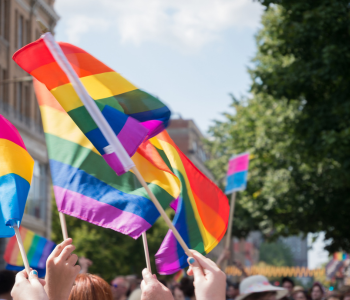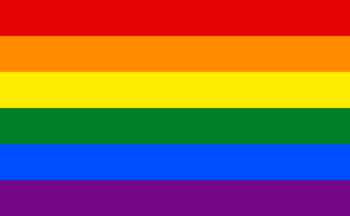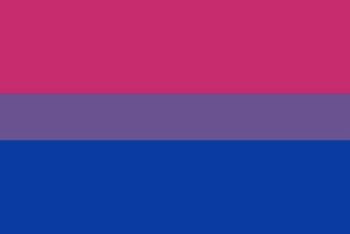Copyright in Pride Flags

June is Pride Month. In addition to being an annual celebration of LGBTQ+ people, their community and their contributions, it also serves as a reminder of the challenges that the community faced and continues to face to this day.
It also has a lot of flags.
According to the Pride Flag Identification Guide, there are at least 51 different flags (other sources report more than 90) connected with the LGBTQ+ community and the various groups it represents.
However, behind every flag is a story and, with every story, comes a creator. Since nearly all pride flags were developed within the last 50 years, this also means that there’s a possibility for copyright and other intellectual property issues to make their presence end.
To that end, pride flags have, by in large, enjoyed a relatively smooth ride when it comes to copyright. But that doesn’t mean there haven’t been issues in the past.
As such, we’re going to take a look at some of the more common pride flags and look at the copyright history of them.
The Rainbow Flag

The original rainbow gay pride flag was developed in 1978 following the assassination of San Francisco Mayor George Moscone and San Francisco Supervisor Harvey Milk.
Created by Gilbert Baker, it drew inspiration from the United States flag and aimed to be a positive symbol for pride. It became the first and, to this day, most recognizable, symbol of pride.
But while it is ubiquitous and free to use, that nearly was not the case. The center Baker was at when he developed the flag attempted to claim ownership of it, seeking both a copyright registration and a trademark registration under their name.
Baker, along with the help of attorney Matt Coles, successfully fought this in court. Baker then made the rainbow pride flag free for anyone to use for any reason, which is how it remains today.
Note: The modern six-color variant of the flag is displayed above, as it is the most common, However, the original had eight colors.
The Progressive Pride Flag

In 2018, designer Daniel Quasar sought to update the iconic rainbow flag and was inspired to do so by other recent designs that aimed to do something similar.
Quasar achieved this by adding a chevron to the left-hand side of the flag that included colors for intersex and transgender people, as well as people of color.
However, this flag has recently become the center of controversy as several reports have come out that Quasar holds a copyright to the flag itself. While this is true, it’s also somewhat misleading.
Though Quasar does hold the copyright to the flag, it’s licensed under a Creative Commons license that only restricts commercial use and unattributed use. Individuals are free to make their own progressive pride flags without fear of reprisal.
However, many still object to this licensing of the flag, calling it profiteering and noting that it prevents or restricts manufacturers from making the flag without permission. They point to the even more open licensing of the original pride flags as an exemplar for how to handle such works.
The Bisexual Pride Flag

According to most sources, the Bisexual Pride flag was created by Michael Page and first unveiled in December 1998.
At the time, Page made it clear that he wanted the flag to be free and available for anyone to use, taking great care to note that it was not “patented, trademark or service marked” in any way.
However, in April 2020, BiNet USA, a charity Page was volunteering for at the time he developed the flag, abruptly claimed that they were owners of the flag and were going to start strongly enforcing their copyright in it.
This drew significant outrage from the community as people questioned both whether the flag can be protected by copyright and, if it can, whether BiNet had any legitimate claim of ownership.
BiNet quickly moved on, ceasing use of the flag just weeks after initially claiming ownership of it. This case represents the only time that a claimed creator of a pride flag attempted to significantly enforce any rights in it.
Other Flags
Though there are dozens of other pride flags, there are also very few issues dealing with copyright, or intellectual property more broadly, stemming from them.
For example, Monica Helms designed the first transgender pride flag in 1999. She has laid no claims to the intellectual property of it, and donated the original flag to the Smithsonian.
Likewise, the Asexual Pride Flag’s creator is seemingly unknown. The flag was chosen in 2010 via an online poll put on by the Asexual Visibility and Education Network (AVEN). Neither the creator nor AVEN have laid any claim to intellectual property related to the flag.
On the whole, the designers of pride flags have been happy simply see their works used and have not sought to limit their reproduction. Though this has raised concerns about rainbow capitalism, it’s also opened the doors for the symbols to be adopted widely and broadly by their respective groups.
Bottom Line
When it comes to flags, the intersection with copyright, and intellectual property more broadly, is always a bit weird.
As we saw in January 2022 when the Australian government purchased the rights to the Aboriginal flag in order to free it from commercial restrictions, claiming copyright in a symbol is a fraught with both legal and ethical questions.
Legally, many flags likely don’t qualify for copyright protection. The use of simple shapes and colors, though potentially meaningful, often does not qualify for copyright protection at all. The same is true for trademark as flags, typically, represent groups of individuals, not a business, service or product.
Ethically, it seems antithetical to the purpose of a flag to place it under lock and key. If flags are going to be used as a symbol for a group of people, there’s a need to reproduce the flag, both online and off, and a need to ensure that it is easily visible.
Strongly enforcing one’s rights in such a work harms the work’s ability to be seen and, as such, it makes it less effective as a symbol.
Fortunately, with a few notable exceptions aside, pride flag designers have understood that and worked to ensure that their creations are as accessible as possible.
Even, at least in the case of the rainbow pride flag, if it necessitated fighting a legal battle to keep it free.
Want to Reuse or Republish this Content?
If you want to feature this article in your site, classroom or elsewhere, just let us know! We usually grant permission within 24 hours.
